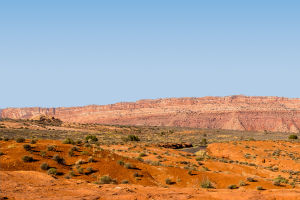Forests, as biomes dominated by woody plants, are invaluable treasures bestowed upon us by nature. Often referred to as the "lungs of the earth," they serve as the cradle of life, brimming with biodiversity and breathtaking beauty.
Encompassing the majority of the Earth's landmass, forests provide us with essential resources and invaluable services.
At the turn of the 21st century, the global forest area measured 3.45 billion hectares, accounting for approximately one-fourth of the Earth's total land area.
The vast forest volume amounted to 383.73 billion cubic meters, with forest biomass reaching 440.48 billion tons. However, the distribution of forests across the world is uneven due to a combination of natural and socio-economic factors.
The forest ecosystem functions as a cohesive system, where interactions occur between forest organisms and the environment, as well as between different organisms within the forest.
Energy conversion and material circulation transpire within this intricate network. Forest ecosystems can be categorized into natural forest ecosystems and plantation forest ecosystems, with the former being the largest and most crucial natural ecosystems on land.
Forests play a vital role in maintaining the balance and well-being of the planet's ecosystems. They contribute significantly to the Earth's oxygen supply by absorbing vast amounts of carbon dioxide and helping regulate the global climate.
Forests also serve as habitats for numerous species, providing abundant food and shelter. These verdant realms are hotspots of biodiversity, supporting the survival of countless endangered plant and animal species.
As human development has progressed, the consumption of wood and forest products has surged from early agricultural practices to modern times. Consequently, there has been a drastic reduction in global forest area, a steady decline in forest quality, and a gradual deterioration of the ecological environment.
The decrease in forest area is influenced by multiple factors, such as population growth, local environmental conditions, and government policies that prioritize agricultural development.
Forest fires also pose a significant threat and cause substantial losses. However, the primary driver behind declining forest area remains the exploitation of forests for timber and forest products.
The global forest resource problem primarily stems from the dwindling quantity and quality of resources. Although the planted forest area expanded by an average of 3 million hectares per year in the 1990s, natural forests globally experienced an annual net loss of 13.03 million hectares.
Consequently, overall, the world's forests continue to decline at a rate of 0.3% per year. Deforestation and excessive harvesting in tropical forest regions are the main culprits. Additionally, acid rain has contributed to vast forest degradation, rendering the land incapable of regeneration.
The urgency to protect forests has become increasingly apparent. Swift and decisive action is necessary to safeguard and restore these vital ecosystems. Firstly, it is crucial to develop sustainable forest management plans that ensure the renewable use of timber and forest resources.
Combatting illegal logging and deforestation is of paramount importance. Governments and international organizations must strengthen supervision and law enforcement, while also formulating more stringent laws and regulations to safeguard forests.
Forests are not merely picturesque landscapes but indispensable ecosystems that sustain life on Earth. Recognizing their immense value, we must act resolutely to protect and restore forests.
By promoting sustainable practices, combating illegal activities, and implementing stronger regulations, we can ensure the preservation of these precious resources for generations to come.


